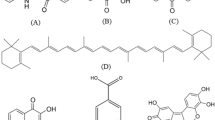Abstract
The initial review of white gold research, summarized at the 1992 Santa Fe Symposium on Jewellery Manufacturing Technology was extended into an investigation of the physical properties of numerous white gold formulations. Attributes such as colour, hardness, melting temperature, tensile strength, cold working performance, investment cast form filling, fire-cracking tendency and nickel allergy response were quantified. Properties of experimental alloys developed from the work of previous studies or new combinations of elements were compared to nickel bleached carat gold materials. Secondary base metal bleaches such as iron and cobalt did not improve the performance of nickel white golds. Formulations based on the bleaching action of palladium combined with copper exhibited comparable or improved physical properties and commercial viability. Free from nickel, with significantly reduced melting temperatures compared to palladium-silver formulations, these materials were directly compared with conventional carat alloys. Positive opinions from field testing reinforced laboratory results. Nickel remains the least expensive commercially viable bleach of gold. The cost of palladium additions is a detrimental factor restricting widespread application for high volume, low cost jewellery. Where the unique properties of palladium white golds are beneficial for hand crafted items, their additional cost can be justified.
Similar content being viewed by others
References
G. Normandeau, ‘White Golds: A Review of Commercial Material Characteristics & Alloy Design Alternatives’,Gold Bull.,25(3), pp. 94–103, 1992
G. O’Connor, ‘Improvement of 18 Carat White Gold Alloys’Gold Bull.,11(2), pp. 35–39, 1978
A. McDonald, G. Sistare, ‘The Metallurgy of Some Carat Gold Jewellery Alloys’,Gold Bull.,11(4), pp. 128–131, 1978
C. Susz, M. Linker, ‘18 Carat White Gold Jewellery Alloys’,Gold Bull.,13(1), pp. 15–20, 1980
G. O’Connor, ‘Alloy Additions for 18 Carat White Gold Jewellery Alloys’,Metals Technology, pp. 261–266, 1979
R. German, M. Guzowski, D. Wright, ‘The Colour of Gold-Silver-Copper Alloys’,Gold Bull.,13(3), pp. 113–116, 1980
B. MacCormack, J. Bowers, ‘New White Gold Alloys’,Gold Bull.,14(1), pp. 19–24, 1981
D. Schneller, ‘Sulphur Dioxide Porosity’,American Jewellery Manufacturer, pp. 30–38, 1985
P. Ilser, W. Form, ‘The Mechanism of Fire-Cracking’,Journal of the Institute of Metals, Vol. 100, pp. 107–113, 1972
P. Gainsbury, ‘An Investigation into Fire-Cracking of an 18 Carat White Gold Alloy’, The Worshipful Company of Goldsmiths, T.A.C., Project 6a, 1970
‘Guidelines for Manufacturing Jewellery and Associated Products in order to Avoid Nickel Allergy’, CEN Technical Committee, CEN 283 WG4, Feb. 26, 1992
L. Gal-Or, ‘Tarnish and Corrosion of Silver & Gold Alloys’, Santa Fe Symposium 1990, Met-Chem Research 1992, pp. 19–37
E.M. Wise, ‘Gold: Recovery, Properties and Applications’, D. Van Nostrand, Princeton, pp. 66–93, 97–153, 1964
W. Rapson, ‘Gold Usage’,Academic Press, London, pp. 41–87, 1978
D. Ott, ‘Metallurgical and Chemical Considerations in Jewellery Casting’, Santa Fe Symposium 1988, Met-Chem Research Inc., pp. 223–244, 1989
D. Ott, C.J. Raub, ‘Gold Casting Alloys’,Gold Bull.,16(2), pp. 46–51, 1983
G. Raynor, ‘The Alloying Behavior of Gold’,Gold Bull.,9(1), pp. 12–19, 1976
K. Sager, J. Rodies, ‘The Colour of Gold and its Alloys’Gold Bull.,10(1), pp. 10–14, 1977
C. Smithells, ‘Metals Reference Book 5th Ed.’, Butterworths, 1976
J. Atkinson, ‘The Bleaching of Gold to Produce White Gold’, The Worshipful Company of Goldsmiths, T.A.C Project No. 6a/2, 1972
L. Gal-Or, ‘Gold Alloys’, Santa Fe Symposium 1987, Met-Chem Research, pp. 57–74, 1988
L.S. Bonneret al., ‘Precious Metals Science and Technology’, IPMI, pp. 440–446, 1991
C. Susz, ‘18 Carat White Gold Alloys’,Aurum (4), pp. 11–22, 1980
B. Taylor, ‘The Work Hardening of 18 Carat White Gold’, The Worshipful Company of Goldsmiths, T.A.C, Project No. 31, 1978
G. Normandeau, Imperial Smelting and Refining Technical Development Bulletin 8609S-1’, Nov. 17, 1986
N. Taylor, United States Patent 1987451, January 8, 1935
T. Koch, United States Patent 1340451, May 18, 1920
E.M. Wise, United States Patent 1577995, March 23, 1926
E.M. Wise, United States Patent 2050077, August 4, 1936
G. Sistare, E. Chamer, United States Patent 3512961, May 19, 1970
Metals Handbook, 9th Edition, Volume 2, American Society for Metals, pp. 680–683
Author information
Authors and Affiliations
Rights and permissions
About this article
Cite this article
Normandeau, G., Roeterink, R. White golds: A question of compromises. Gold Bull 27, 70–86 (1994). https://doi.org/10.1007/BF03214730
Issue Date:
DOI: https://doi.org/10.1007/BF03214730




